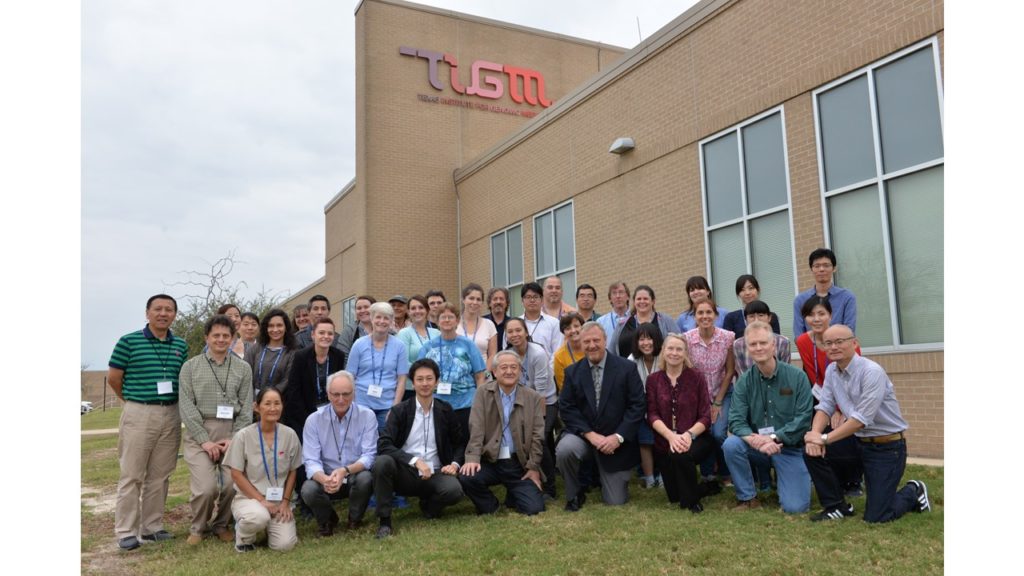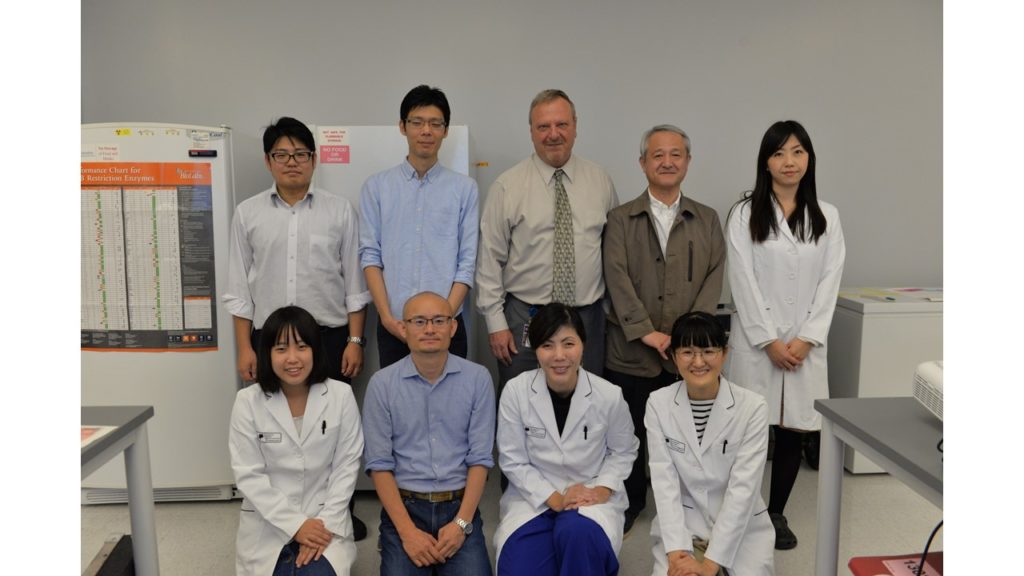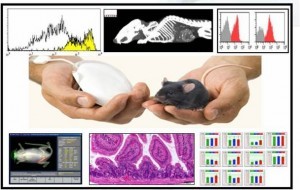Latest News
TIGM presented at the 17th Transgenic Technology Meeting, September 17-20, 2022 in Helsinki, Finland. See our poster.
TIGM will present at the 16th Transgenic Technology Meeting (TT2020) organized virtually by Weizmann Institute of Science, Israel from 26-29 October, 2020. Please come to see our poster “Production of Conditional Knockout Alleles in Mice by CRISPR/Cas9-Mediated Genome Editing Using Two Guides/Two Oligos Approach” at the Poster chat 4 between 18:00 -18:15 Israel time (GMT/UTC+3). More information can be found here.
TIGM is collaborating with Revive & Restore and Texas A&M University Department of Poultry Science on avian de-extinction project. Read more here.
TIGM Becomes a Part of Newly-Funded Texas A&M Environmental Health Science Center
Texas A&M has received a five-year grant from the National Institute of Environmental Health Sciences (NIEHS) under the EHS Core Centers Program to open its very own environmental health science center, of which TIGM will be a core component.
The Texas A&M Center for Environmental Health Research (TiCER) is one of 24 university-based EHS Core Centers that are spread out in 16 states across the nation. These centers are meant to be hubs of scientific collaboration and state-of-the-art technologies that can advance environmental health science research, promote translational research and community outreach, and train new investigators in the field.
NIEHS fosters these collaborations by supplying the funding necessary to establish new and augment existing infrastructure that can support the facilities, equipment, and resources to be shared among researchers. Texas A&M University itself has also pledged almost $3 million over the next five years in support of the new center.
TiCER’s overall goal is to enhance public health by identifying, understanding, and reducing environmental health risks and to increase the impact of environmental health research at Texas A&M. Organized around four research themes, the Center aims to bring researchers together from multiple disciplines. This is in effort to promote the formation of unique collaborations and exchange of novel ideas that could lead to high impact discoveries.
The Center’s vision will be realized in part through an integrated set of Facility Cores that exist to support implementation of research strategies and use of technologies for Center members. TIGM resources and facilities will be available to TiCER members through one of these cores, including access to TIGM knockout mice and stocked cell lines.
More information on TiCER can be found here.
TIGM will present at the American Heart Association’s Scientific Sessions to be held in Philadelphia, Pennsylvania from November 16-18 2019. Please come to see our poster “Sex As A Biological Variable Is Evident Following Deletion Of Intestinal Apolipoprotein A1” at the Best of Basic Science Session AT.APS.01. More information can be found here.
Fall 2019 Newsletter
Over the past year, with the support of Texas A&M AgriLife Research, TIGM has continued offering a variety of services to the domestic and international research communities. To date, TIGM has provided more than 390 mouse lines and more than 3,700 ES cell lines to the scientists around the world. We significantly diversified our CRISPR/Cas9 production capabilities that now include generation of conditional (floxed) alleles. Important scientific breakthroughs are made with both direct and indirect involvement of TIGM; more than 230 peer-reviewed papers have been published by either TIGM scientists or external researchers who utilized TIGM resources. We now have more than 270 mouse lines in our repository all available at cost recovery rates; our database listings are being updated regularly. In collaboration with TAMUS institutes and facilities, TIGM offers centralized access to a variety of phenotyping services.
[Download Fall 2019 Newsletter]
In a recent release in bioRxiv (Cold Spring Harbor Laboratory), researchers from 17 institutions around the world pooled their results regarding the use of CRISPR to make conditional (loxP) knockout mouse models using 2 single guide RNAs (sgRNA) and 2 single-stranded oligonucleotides (ssODN) (2sgRNA-2ssODN). Despite the fact that after extensive testing the consortium found that only 0.87% of mice were correctly targeted – indicating a very low efficiency with this method – TIGM appears to be the only Core lab that has consistently produced conditional KOs by injecting 2sgRNA-2ssODN.
TIGM has been actively involved in developing CRISPR/Cas9 technology since 2015 and already produced and confirmed over 20 various mutant lines. Here is the first report featuring knockout mouse model produced by TIGM via CRISPR/Cas9 for Professor Leif Andresson from Texas A&M University presented during the Plant and Animal Genome XXVI Conference (January 13 – 17, 2018), in San Diego, CA.
TIGM proudly hosted a high-powered, hands-on cryopreservation MOUSE SPERM AND EMBRYO CRYOPRESERVATION WORKSHOP during November 14-18 [Sponsored by Center for Animal Resource Development (CARD), MD Anderson Cancer Center, University of Texas and the Texas A&M Institute for Genomic Medicine (TIGM)]. We were very fortunate to be chosen as a site where Dr. Naomi Nakagata, from the CARD Institute in Japan, instructed attendees in his new, state of the art methods of cryopreservation of mouse embryos and sperm. This was only the second workshop that CARD has offered in the United States.
The laboratory of Prof. Naomi Nakagata in Kumamoto University has elevated the technology in the cryopreservation field with his new developments for fresh and frozen sperm techniques and associated IVF methods that have resulted in unparalleled increases in efficiencies for the cryopreservation and rescue of relevant mouse lines. TIGM and other cryopreservation facilities now use CARD-derived methods with great results. There are many other laboratories and facilities throughout the world interested in learning these techniques but until recently there were very few courses where these new methods were regularly taught. Prof. Naomi Nakagata has graciously agreed to organize this hands-on workshop in the US, where various key persons from CARD-Univ. Kumamoto will come to teach 19 selected participants.
TIGM presented at the 14th Transgenic Technology Meeting, October 1-4, 2017, Snowbird Resort, Salt Lake City, Utah, USA. See our poster.
A joint TIGM and Millipore-SIGMA seminar will take place at TIGM on Wednesday, September 27, 2017 between 12 and 1:00PM. The SIGMA seminar is titled Advanced CRISPR/Cas9 Genome Editing Technology in Mammalian Systems, and will be followed up by TIGM scientists discussing the great success utilizing the CRISPR technology here at TIGM.
TIGM presented at the Cellular and Molecular Mechanisms of Toxicity Gordon Research Conference Advanced Investigation in Mechanistic Toxicology August 13-18, 2017, Proctor Academy, Andover, NH. See our poster Ablation of long noncoding RNA MALAT1 decreases reactive oxygen species and sensitizes the insulin responses in mice
TIGM scientists coauthored a paper featuring long non-coding RNA knockout line produced using one of the gene trapped ES cells lines from the repository.
Absence of Malat1 does not prevent DEN-induced hepatocarcinoma in mice.Miard, S., Girard, M., Joubert, P., Carter, S., Gonzales, A., Guo, H., Morpurgo, B., Boivin, L., Golovko, A., Picard, F. Oncology Reports. 2017 http://dx.doi.org/10.3892/or.2017.5468. [Epub ahead of print]
The Texas Institute for Genomic Medicine currently houses two x-ray based imaging units used for non-invasive imaging in mice. The Faxitron Ultra Focus Digital Radiography system with DXA is used for ultra-high resolution imaging and dual-energy x-ray absorptiometry. In DXA mode this system automatically calculate Bone Mineral Density, Bone Mineral Content, lean and fat mass percentages, and outputs data for both whole body or region of interest. The Scanco Viva40 MicroCT reconstructs 2D images into a 3D tomography to describe the morphology and micro-architecture of hard/soft tissues in small animal models. High-resolution X-ray CT provides non-destructive three-dimensional mapping of density, enabling topology, structural visualization and quantitative analysis for a wide variety of live samples. These units are routinely used for longitudinal studies to document treatment effects on individual subjects.
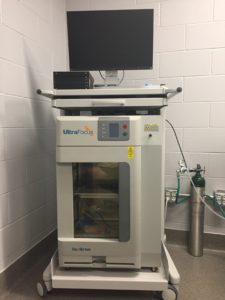
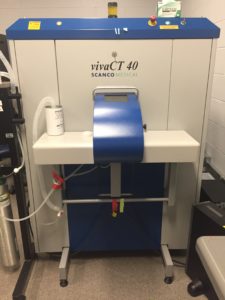
TIGM scientists published a paper describing production of knockout line using one of the gene trapped ES cells lines from the repository.
The eIF2A knockout mouse. Golovko A, Kojukhov A, Guan BJ, Morpurgo B, Merrick WC, Mazumder B, Hatzoglou M, Komar AA. Cell Cycle. 2016 Sep 29:0. [Epub ahead of print]
TIGM’s work was presented at the Precision Genome Editing Workshop at Rice University 5 on December 4, 2015. The Workshop was organized by Rice University, Baylor College of Medicine, MD Anderson Cancer Center, UT Health Science Center at Houston, and The Texas A&M Health Science Center. The presentation titled “Post Gene –Trap Era at TIGM” highlighted our recent experience and success in using the CRISPR-Cas9 tool for gene editing. See our presentation.
TIGM’s work was presented at the 2015 Lone Star and South Central Joint Regional Chapter of The Society of Toxicology (SOT) Annual Meeting on October 22–24, 2015. See our abstract and poster.
Gene trap insertion produces a functional microRNA mutation.
TIGM gene trap library contains a subset of clones with insertion inside murine microRNAs. Together these mutations disrupt 15 unique miRNAs, representing only 3% of the mouse miRNA genes. There’s a much larger subset of clone with insertions near miRNA loci, but not inside these genes, and they were excluded from the list of potentially mutagenic gene traps. In turns out, however, that under certain circumstances such mutations may effectively knock out miRNAs. In a recent paper published in the May 23, 2014 issue of Elife and featuring mutant mice from TIGM’s C57BL/6 library, Elik Chapnik and colleagues reported production of fully functional miR-142 knockout from the TIGM clone carrying gene trap insertion ∼50 bp upstream of the murine pre-miR-142, but inside a larger primary miRNA (pri-miRNA) expressed by the mir142 host gene (miR-142 orchestrates a network of actin cytoskeleton regulators during megakaryopoiesis). This cassette disrupted normal transcription and drove the expression of a beta-galactosidase reporter gene. Genetic ablation of miR-142 caused impaired megakaryocyte maturation, inhibition of polyploidization, abnormal proplatelet formation, and thrombocytopenia. The miR-142 knockout ES cells are available at TIGM repository.
Metabolic disease model produced from TIGM gene trapped ES cells.
Angiopoietin‐like‐2 (angptl2) is produced by several cell types including endothelial cells, adipocytes and macrophages, and contributes to the inflammatory process in cardiovascular diseases. Accumulating reports are starting to highlight the importance of angptl2 involvement in a plethora of pathologies ranging from obesity and cancer to atherosclerosis. In a recent paper published in the August issue of J Am Heart Assoc. and featuring mutant mice produced from TIGM’s C57BL/6 ES cell clone, Carol Yu and colleagues show that lowering angptl2 is beneficial for the vascular endothelium by maintaining its respective EDRF contribution in conductance and resistance arteries, in addition to a more favorable lipid profile in KD mice fed an HFD. To the best of our knowledge, this is the first report of the impact of angptl2 in the contribution of the various EDRFs and their resistance against a stress induced by an HFD. These data reveal better endothelial function in the arteries of Angptl2 KO mice with preserved NO‐mediated dilation in femoral arteries and preserved EDHF‐dilation in mesenteric arteries against a 3‐month HFD‐induced hypercholesterolemia and fat accumulation in the liver and adipose tissues. The Angptl2 knockout mice are available at TIGM repository.
Gene trapped ES cells as an excellent model to better understand regulation of ESC pluripotency and cell cycle.
TIGM gene trap mutations can be effectively used to study cellular processes in vitro especially when a targeted gene is X- or Y-linked. In a recent paper published in the June 23 issue of Nucleic Acids Research and featuring mutant cells from TIGM’s C57BL/6 library, Bradford A. Youngblood and colleagues characterized an ESC model that lacks expression of the 3′ end-processing factor CstF-64 (CstF-64 supports pluripotency and regulates cell cycle progression in embryonic stem cells through histone 3′ end processing). These ESCs display slower growth, loss of pluripotency and a lengthened G1 phase, correlating with increased polyadenylation of histone mRNAs. These results suggest that CstF-64 plays a key role in modulating the cell cycle in ESCs while simultaneously controlling histone mRNA 3′ end processing. The CstF-64 knockout ES cells are available at TIGM repository. As part of a collaborative effort, TIGM provided training in ES cell culture techniques to the scientists who published this paper. Such trainings are free of charge and available to all interested scientists.
We are proud to announce that TIGM is a part of the Center for Translational Environmental Health Research (CTEHR)
As one of only 18 NIEHS Centers of Excellence in the country, CTEHR is now poised to lead the state and nation in human environmental health research. Its mission is to improve human environmental health by integrating advances in basic, biomedical, and engineering research and by promoting translation of these advances between the bench, the bedside, and the community. The CTEHR is a multi-university program, including Texas A&M University, Texas A&M AgriLife Research, Texas A&M HSC, Baylor College of Medicine, and the University of Houston. For more information please visit http://ctehr.tamu.edu/
Use of the gene trap mutation to disrupt a mitochondrial protein
TIGM gene trap mutations can effectively knock nuclear-encoded mitochondrial proteins. In a recent paper published in the 10 November issue of Nature Cell Biology and featuring a mouse produced from a TIGM’s C57BL/6 gene trapped clone, Xin Pan and colleagues characterized a mouse model that lacks expression of the mitochondrial calcium uniporter (Mcu) ( The physiological role of mitochondrial calcium revealed by mice lacking the mitochondrial calcium uniporter). Mitochondria derived from Mcu(-/-) mice have no apparent capacity to rapidly uptake calcium and Mcu(-/-) mice exhibited marked impairment in their ability to perform strenuous work. The authors further show that mitochondria from Mcu (-/-) mice lacked evidence for calcium-induced permeability transition pore (PTP) opening which does not seem to protect Mcu(-/-) cells and tissues from cell death, although Mcu (-/-) hearts fail to respond to the PTP inhibitor cyclosporin A. These results clarify how acute alterations in mitochondrial matrix calcium can regulate mammalian physiology. The Mcu knockout line is available at TIGM repository.
Texas A&M advances global disease prevention with launch of field-to-clinic initiative, utilizing TIGM genetically engineered mice. Click here to read more.
TIGM has reached a milestone of more than 100 known publications featuring mice or ES cells provided by TIGM
For the complete list please visit our publications page.
A US patent granted to Texas A&M features TIGM mice
CANCER TREATMENT TARGETING NON-CODING RNA OVEREXPRESSION. Stephen Safe, KyoungHyun Kim. United States Patent Application 20130267575. Filing Date: 03/07/2013; Publication Date: 10/10/2013.
http://www.freepatentsonline.com/y2013/0267575.html
Fall 2013 Newsletter
Over the past year TIGM has continued expanding its capabilities. In collaboration with TAMU institutes and facilities, TIGM can now offer centralized access to a variety of phenotyping services. Our production efforts are as strong as ever; To date, TIGM has provided more than 295 mouse lines and more than 3,700 ES cell lines to research community. TIGM continues to offer a variety of services to the domestic and international research communities and high-throughput screening of our ES cell library. Important scientific breakthroughs are made with both direct and indirect involvement of TIGM; more than 90 peer-reviewed papers have been published by either TIGM scientists or external researchers who utilized TIGM resources have been published. We now have more than 220 mouse lines in our repository all available at cost recovery rates. These are in addition to 170 NIH- and Wellcome-Trust-subsidized lines also available through TIGM.
[Download Fall 2013 Newsletter]
TIGM on the road
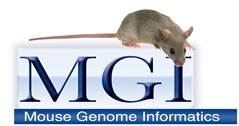 TIGM will host Practical Workshop in Mouse Genome Informatics (MGI) provided by our colleagues from The Jackson Laboratory on October 2, 2013 between 1 and 3 pm at TAMU VMTH, Room 28. MGI is a free, highly curated database resource for genetic, genomic and phenotypic information pertaining to the laboratory mouse and mouse models of human disease. See our flyer for more information. TIGM will host Practical Workshop in Mouse Genome Informatics (MGI) provided by our colleagues from The Jackson Laboratory on October 2, 2013 between 1 and 3 pm at TAMU VMTH, Room 28. MGI is a free, highly curated database resource for genetic, genomic and phenotypic information pertaining to the laboratory mouse and mouse models of human disease. See our flyer for more information. |
|
TIGM will be presenting at the 4th Annual, Advances in Oncology – From Clinical Science to Clinical Practice Conferenceto be held at Brown Foundation Institute of Molecular Medicine, 1825 Pressler Street, Houston, Texas on October 11th 2013. Please  come by and visit. TIGM scientists will be available to discuss our technology and resources.See our abstract and poster. come by and visit. TIGM scientists will be available to discuss our technology and resources.See our abstract and poster. |
TIGM is serving as a centralized access hub to various phenotyping labs at TAMU. For more information please click here
Heterozygous gene trapped mutant lines can develop phenotype
Even though about 30% of knockouts turn out to be embryonic lethal, they can still be a source of invaluable scientific information. In a recent paper published in the July issue of Arteriosclerosis, Thrombosis, and Vascular Biology and featuring a mouse produced from a TIGM’s C57BL/6 gene trapped clone, Roy L. Sutliff and colleagues showed that polymerase delta interacting protein 2 (Poldip2) heterozygous mutation reduces H2O2 production in vivo, leading to increases in extracellular matrix, greater vascular stiffness, and impaired agonist-mediated contraction Polymerase Delta Interacting Protein 2 Sustains Vascular Structure and Function. Based on these finding the researchers concluded that unaltered expression of Poldip2 is necessary for vascular integrity and function. The Poldip2 knockout line is available at TIGM repository.
TIGM in the press
Reversing skin cellular aging is now possible as demonstrated in a study at Texas A&M University. Read More
New publications featuring mice/clones created and provided by TIGM
TIMP3 is the primary TIMP to regulate agonist-induced vascular remodelling and hypertension Basu R, Lee J, Morton JS, Takawale A, Fan D, Kandalam V, Wang X, Davidge ST, Kassiri Z. Cardiovasc Res. 2013 Jun 1;98(3):360-71. doi: 10.1093/cvr/cvt067. Epub 2013 Mar 21.
Genetic deletion of Rnd3 results in aqueductal stenosis leading to hydrocephalus through up-regulation of Notch signaling. Lin X, Liu B, Yang X, Yue X, Diao L, Wang J, Chang J. Proc Natl Acad Sci U S A. 2013 Apr 29. [Request Info on Rnd3 knockout]
GPR55, a G-Protein Coupled Receptor for Lysophosphatidylinositol, Plays a Role in Motor Coordination. Wu CS, Chen H, Sun H, Zhu J, Jew CP, Wager-Miller J, Straiker A, Spencer C, Bradshaw H, Mackie K, Lu HC. PLoS One. 2013;8(4):e60314. doi: 10.1371/journal.pone.0060314. Epub 2013 Apr 2. [Request Info on Gpr55 knockout]
Dact2 Represses PITX2 Transcriptional Activation and Cell Proliferation through Wnt/beta-Catenin Signaling during Odontogenesis Li X, Florez S, Wang J, Cao H, Amendt BA. PLoS One. 2013. The Dact2 knockout line is available at TIGM repository.
October 12, 2012
TIGM presented at the 3rd Annual Advances in Oncology: From Clinical Science to Clinical Practice in Houston, Texas.
A Gene Trap Resource to Characterize Cancer-related lncRNAs in C57BL/6 ES Cells & Mice
Summary: Over 1,000 inactivated ncRNAs, including a number of lncRNAs were identified in the TIGM clone collection. One such clone, IST14461G11, was used to establish a colony of homozygous mutant Malat1 mice in pure C57BL/6N genetic background. Real time PCR‐based expression analysis confirmed absence of the targeted transcript in the mutant line.
[ Download Poster (PDF)]

